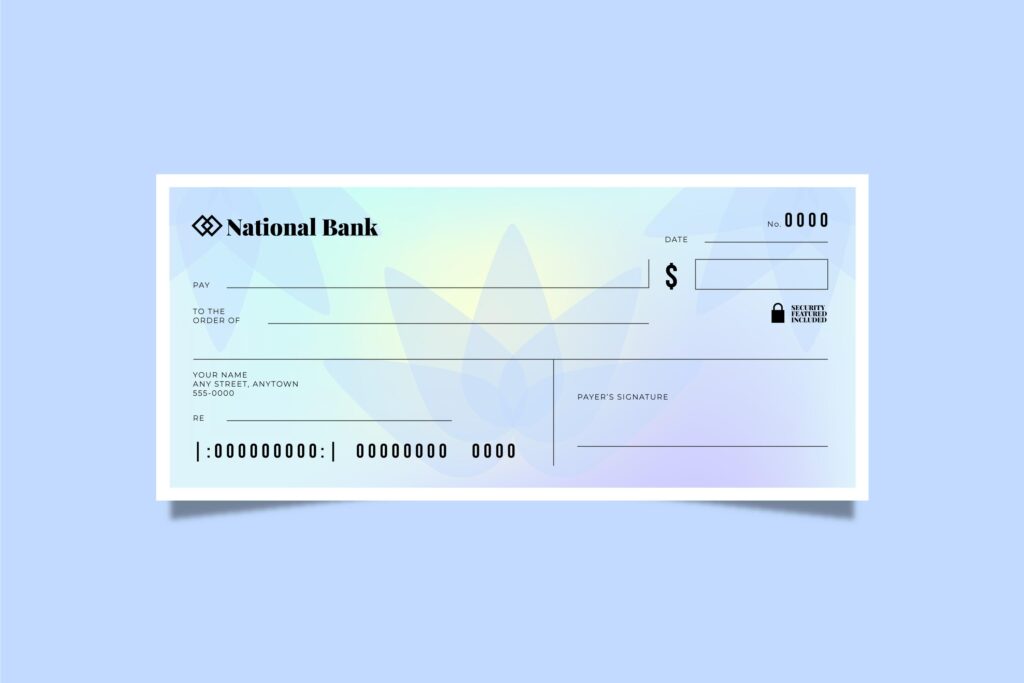“Resilient Recovery: Mastering Legal Strategies for Cheque Bounce Resolution”

cheque bounce
Introduction: Decoding the Legal Maze of Cheque Bounce
In the intricate web of financial transactions, a bounced cheque can often be a perplexing and challenging issue, causing disruptions and legal repercussions for individuals and businesses. Understanding the nuances of cheque bounce laws is essential for safeguarding financial integrity and navigating potential legal complexities.
A cheque bounce occurs when a cheque presented for payment is returned unpaid by the bank due to various reasons such as insufficient funds, signature discrepancies, or post-dated cheques. While this may seem like a routine occurrence, its legal implications can be far-reaching and demand a comprehensive understanding of applicable laws and procedures.
In this article, we delve deep into the legal framework surrounding cheque bounce incidents, exploring the responsibilities of both issuers and recipients, the repercussions faced by defaulters, and the recourse available to affected parties. By shedding light on this critical topic, we aim to equip readers with valuable insights and actionable strategies to effectively address and prevent cheque bounce issues.
Understanding Cheque Bounce under Section 138 of the Negotiable Instruments Act
Cheque bounce, as defined under Section 138 of the Negotiable Instruments Act, of 1881, occurs when a cheque that is presented for payment to a bank is dishonored due to insufficient funds or if it exceeds the amount arranged to be paid from the drawer’s account. This section specifically deals with the legal consequences and remedies available in cases where the bank dishonors a cheque.
According to Section 138, the following conditions must be met for a cheque bounce case to be actionable:
- Issuance of Cheque: The cheque must have been issued by the drawer in discharge of a debt or liability.
- Presentment of Cheque: The cheque must have been presented to the bank within its period of validity, which is usually within three months from the date mentioned on the cheque.
- Return of Cheque: The bank must have returned the cheque unpaid due to reasons such as insufficient funds, account closed, or mismatched signature.
- Notice to Drawer: The payee (recipient of the bounced cheque) must serve a legal notice within 30 days of receiving information from the bank regarding the dishonor of the cheque.
Upon receipt of the legal notice, the drawer of the bounced cheque has an opportunity to make the payment within 15 days of receiving the notice. If the drawer fails to make the payment within this period, the payee may initiate legal proceedings against the drawer under Section 138 of the Negotiable Instruments Act.
It’s important to note that cheque bounce cases under Section 138 are considered criminal offenses punishable with imprisonment or fine or both, upon conviction. The legal provisions under this section are aimed at ensuring the sanctity of negotiable instruments and maintaining the credibility of financial transactions.
In summary, cheque bounce under Section 138 of the Negotiable Instruments Act signifies the dishonor of a cheque due to insufficient funds or other reasons, leading to legal consequences and potential criminal liability for the drawer of the cheque.

Legal Framework and Responsibilities in Cheque Bounce Cases
Cheque bounce cases are governed by a specific legal framework designed to regulate negotiable instruments and protect the interests of parties involved in financial transactions. Understanding the legal provisions and responsibilities is crucial for both issuers and recipients of cheques.
Legal Provisions:
The primary legal framework governing cheque bounce cases is outlined in the Negotiable Instruments Act, 1881, specifically under Section 138 to Section 142. These sections provide detailed provisions concerning the consequences of dishonor of cheques and the procedures for initiating legal action against defaulters.
Responsibilities of Issuers:
- Ensuring Sufficient Funds: The issuer (drawer) of a cheque is responsible for ensuring that there are sufficient funds in the bank account to cover the amount mentioned on the cheque at the time of issuance.
- Accuracy of Information: The issuer must ensure that all information on the cheque, including the payee’s name, date, and amount, is accurate and matches the details agreed upon.
- Honoring Payment: Upon issuance of a cheque, the issuer is legally obligated to honor the payment if the cheque is presented for encashment within its validity period.
Responsibilities of Recipients:
- Presenting the Cheque Timely: The recipient (payee) of a cheque is responsible for presenting the cheque to the bank for payment within its validity period, usually within three months from the date mentioned on the cheque.
- Notifying the Drawer: In case of dishonor of the cheque, the recipient must serve a legal notice to the drawer within 30 days of receiving information from the bank regarding the dishonor, demanding the payment of the amount mentioned on the cheque.
Legal Recourse:
In the event of a cheque bounce, the recipient has the right to initiate legal proceedings against the drawer under Section 138 of the Negotiable Instruments Act. The legal recourse may involve issuing a legal notice, filing a complaint in court, and attending legal proceedings to recover the due amount along with legal costs and penalties.
Importance of Compliance:
Both issuers and recipients of cheques must adhere to the legal provisions and fulfill their responsibilities to maintain the integrity of financial transactions. Compliance with the legal framework not only protects individual rights but also promotes trust and transparency in commercial dealings.
In conclusion, the legal framework surrounding cheque bounce cases establishes clear responsibilities for issuers and recipients and provides a structured mechanism for resolving disputes arising from dishonored cheques.
Reasons for Cheque Bounce
Cheque bounce, a prevalent issue in financial transactions, can occur due to various reasons that hinder the successful processing of a cheque. Understanding these reasons is crucial for both issuers and recipients to prevent dishonor and legal complications. Below are some common reasons for cheque bounce:
- Insufficient Funds
One of the primary reasons for cheque bounce is insufficient funds in the issuer’s bank account. When a cheque is presented for payment, the bank dishonors it if the account balance is insufficient to cover the cheque amount.
- Signature Mismatch
A cheque may bounce if the signature on the cheque does not match the specimen signature recorded with the bank. Banks verify signatures to prevent fraud and unauthorized transactions.
- Post-Dated Cheques
Cheques issued with future dates (post-dated) can bounce if presented before the specified date. Banks will dishonor post-dated cheques if presented prematurely.
- Account Closed or Frozen
If the issuer’s bank account is closed or frozen due to various reasons such as non-operation, legal issues, or account holder’s request, any cheques issued from that account will bounce.
- Technical Errors
Sometimes, technical errors such as incomplete or improperly filled-out cheques (e.g., missing date, ambiguous amount) can lead to cheque bounce.
- Stop Payment Instructions
The drawer of a cheque may issue “stop payment” instructions to the bank to prevent the encashment of a previously issued cheque. If the recipient attempts to deposit such a cheque, it will bounce.
- Overwriting or Alterations
Any alterations or overwriting on the cheque, unless properly authenticated, can lead to suspicion and eventual dishonor by the bank.
- Stale-Dated Cheques
Cheques presented for payment after their validity period (usually three months from the date mentioned on the cheque) may bounce due to being stale-dated.
- Other Banking Issues
Certain banking issues such as mismatched account details, non-compliance with bank policies, or technical glitches during processing can also result in cheque bounce.
It’s essential for cheque issuers to maintain adequate funds in their accounts, provide accurate information on cheques, and adhere to banking guidelines to prevent cheque bounce. Recipients should promptly present cheques for encashment within their validity period and verify cheque details to avoid complications.
By understanding these common reasons for cheque bounce and taking preventive measures, individuals and businesses can minimize the risk of dishonored cheques and associated legal repercussions.
Consequences for the Issuer of a Bounced Cheque
When a cheque issued by an individual or business bounces (i.e., is dishonored by the bank), it can lead to several legal and financial consequences for the issuer. Understanding these consequences is essential for promoting responsible financial behavior and avoiding potential legal liabilities. Below are the key consequences faced by the issuer of a bounced cheque:
- Legal Liability
Under Section 138 of the Negotiable Instruments Act, 1881 (or equivalent legislation in respective jurisdictions), the issuer of a bounced cheque may face criminal liability. If the payee (recipient of the bounced cheque) serves a legal notice within 30 days of receiving information about the dishonor, the issuer has 15 days to settle the payment. Failure to make the payment within the specified period can lead to criminal prosecution.
- Penalty and Fine
In addition to the amount mentioned on the bounced cheque, the issuer may be liable to pay a penalty as prescribed by the applicable laws. The penalty amount can vary depending on the jurisdiction and the seriousness of the offense.
- Damage to Credit Rating
A bounced cheque can negatively impact the issuer’s credit rating and financial reputation. Banks and financial institutions consider bounced cheques as a sign of financial irresponsibility, which can affect the issuer’s ability to obtain credit or financial services in the future.
- Legal Expenses
The issuer may incur legal expenses associated with defending against legal actions initiated by the payee or facing court proceedings related to the bounced cheque. Legal fees, court costs, and other expenses can add to the financial burden.
- Civil Lawsuits
Apart from criminal proceedings under Section 138, the payee may also file a civil lawsuit against the issuer to recover the due amount along with damages and legal costs. Civil lawsuits can further escalate the legal and financial consequences for the issuer.
- Reputation Damage
Bounced cheques can tarnish the issuer’s reputation in the business community and among financial institutions. This can lead to distrust among potential business partners, suppliers, and clients, affecting future business relationships.
- Banking Restrictions
Some banks may impose restrictions or penalties on account holders with a history of bounced cheques. This can include limiting access to certain banking services or imposing additional charges.
- Criminal Record
In severe cases or upon repeated offenses, the issuer of a bounced cheque may end up with a criminal record, which can have long-term consequences on employment opportunities and personal life.
- Collection Agencies
If the bounced cheque remains unpaid despite legal actions, collection agencies may be involved in recovering the debt, leading to further harassment and inconvenience for the issuer.
Mitigation and Prevention
To mitigate the consequences of a bounced cheque, issuers should ensure sufficient funds in their bank accounts, provide accurate information on cheques, and promptly address any financial discrepancies. Maintaining financial discipline and transparency is key to avoiding legal and financial troubles associated with bounced cheques.
Recipient's Rights and Remedies for a Bounced Cheque
When a cheque issued by a debtor bounces (i.e., is dishonored by the bank), the recipient (payee) has specific rights and remedies available under the legal framework to recover the due amount and seek appropriate redress. Understanding these rights is crucial for recipients to assert their claims effectively. Below are the key rights and remedies available to recipients in case of a bounced cheque:
- Issuing a Legal Notice
Upon receiving information about the dishonor of the cheque from the bank, the recipient has the right to issue a legal notice to the issuer (drawer) demanding the payment of the due amount within 30 days of receiving such information. The legal notice must comply with the requirements specified under the applicable laws.
- Initiating Criminal Proceedings
Under Section 138 of the Negotiable Instruments Act, 1881 (or equivalent legislation in respective jurisdictions), if the issuer fails to make the payment within 15 days of receiving the legal notice, the recipient can initiate criminal proceedings against the issuer. The recipient can file a complaint in the appropriate court, and upon conviction, the issuer may face imprisonment, fine, or both.
- Filing a Civil Lawsuit
In addition to criminal proceedings, the recipient may choose to file a civil lawsuit against the issuer to recover the due amount along with interest, damages, and legal costs. Civil lawsuits provide an alternative legal remedy to enforce the payment obligation.
- Seeking Compensation
The recipient has the right to seek compensation for any financial losses or damages incurred due to the dishonor of the cheque. This may include reimbursement of bank charges, legal fees, and other expenses incurred in pursuing the case.
- Exercising Banking Rights
Recipients can exercise certain banking rights, such as re-presenting the bounced cheque for payment within the validity period or requesting the bank to provide a certificate of dishonor as evidence in legal proceedings.
- Negotiating Settlement
Recipients can explore the option of negotiating a settlement with the issuer outside of court proceedings. This may involve reaching a mutually acceptable agreement for repayment of the due amount and other terms.
- Registering Complaints
Recipients can register complaints with banking ombudsmen or regulatory authorities in case of repeated instances of cheque bounce or banking malpractices by the issuer or the bank.
- Enforcement of Legal Rights
Recipients have the right to enforce their legal rights and remedies diligently to recover the due amount and uphold their financial interests under the applicable laws and regulations.
Importance of Legal Assistance
Seeking legal advice and assistance from qualified professionals, such as lawyers specializing in banking and finance laws, can help recipients navigate the legal complexities associated with bounced cheques and effectively assert their rights.
In summary, recipients of bounced cheques have comprehensive rights and remedies under the legal framework to recover the due amount and seek appropriate redress against defaulting issuers. By understanding and exercising these rights, recipients can uphold financial integrity and deter potential instances of cheque bounce.
Legal Procedures and Recourse for Cheque Bounce Cases
Cheque bounce cases are subject to specific legal procedures outlined under the Negotiable Instruments Act, 1881 (or equivalent legislation in respective jurisdictions). When a cheque is dishonored by a bank, the affected party (recipient) can pursue legal recourse to recover the due amount and seek appropriate redress. Below are the key legal procedures and recourse options available in cheque bounce cases:
- Issuing Legal Notice:
Upon receiving information about the dishonor of a cheque from the bank, the recipient (payee) has the right to issue a legal notice to the issuer (drawer) demanding the payment of the due amount. The legal notice must be sent within 30 days of receiving the dishonor intimation and should specify the amount due, failure to which may result in criminal prosecution under Section 138 of the Negotiable Instruments Act.
After issuing the legal notice, the issuer has 15 days to make the payment of the due amount to the recipient. During this waiting period, the recipient must allow reasonable time for the issuer to arrange the funds and settle the payment.
- Initiating Criminal Complaint:
Suppose the issuer fails to make the payment within the stipulated 15-day period after receiving the legal notice. In that case, the recipient can initiate criminal proceedings against the issuer by filing a complaint in the appropriate court. The complaint should include relevant documents, such as the bounced cheque, dishonor memo, and proof of legal notice.
- Court Proceedings:
Upon filing a criminal complaint, the court will initiate legal proceedings to adjudicate the cheque bounce case. Both parties (recipient and issuer) will be summoned to present their respective arguments and evidence before the court.
- Burden of Proof:
In cheque bounce cases, the burden of proof lies with the recipient to establish the dishonor of the cheque and non-payment by the issuer despite legal notice. The recipient must provide evidence supporting the claim, including the bounced cheque, dishonor memo, legal notice, and any other relevant documents.
- Penalties and Punishments:
If the court finds the issuer guilty of dishonoring the cheque intentionally or due to insufficient funds, it may impose penalties, including imprisonment for a term which may extend to two years or with a fine which may extend to twice the amount of the cheque, or with both.
- Civil Lawsuit:
In addition to criminal proceedings, the recipient may choose to file a civil lawsuit against the issuer to recover the due amount along with interest, damages, and legal costs. Civil lawsuits provide an alternative legal remedy to enforce the payment obligation.
- Enforcement of Court Order:
If the court rules in favor of the recipient and issues an order directing the issuer to pay the due amount, the recipient can enforce the court order through legal means, such as garnishment of wages or attachment of assets, to recover the outstanding debt.
Importance of Legal Representation:
Given the legal complexities involved in cheque bounce cases, recipients are advised to seek legal representation from qualified lawyers specializing in banking and finance laws. Legal experts can provide valuable guidance and representation throughout the legal proceedings, ensuring effective enforcement of rights and remedies.
In summary, legal procedures and recourse for cheque bounce cases involve issuing a legal notice, initiating criminal complaints, presenting evidence before the court, and enforcing court orders to recover the due amount from defaulting issuers. By adhering to the prescribed legal procedures and seeking professional legal assistance, recipients can assert their rights and seek redress against cheque bounce incidents effectively.
Prevention and Precautions to Avoid Cheque Bounce
Cheque bounce incidents can be disruptive and lead to legal complications. To prevent cheque bounce and maintain financial integrity, individuals and businesses should adopt proactive measures and exercise due diligence in cheque issuance and management. Below are essential prevention and precautions to avoid cheque bounce:
- Maintain Sufficient Funds:
Ensure that there are adequate funds in your bank account before issuing a cheque. Regularly monitor account balances to avoid the risk of cheque bounce due to insufficient funds.
- Verify Information on Cheques:
Double-check all details on the cheque, including the payee’s name, amount in words and figures, date, and signature. Any discrepancies or errors may lead to the dishonor of the cheque.
- Use Clear and Legible Handwriting:
Write legibly and clearly on the cheque to avoid misinterpretation or misreading of information by bank officials during processing.
- Avoid Post-Dated Cheques:
Be cautious when issuing post-dated cheques. Ensure that the cheque date is valid and that the recipient understands the specified encashment date to prevent premature presentation.
- Communicate with Bank:
Inform your bank in advance if there are any changes to your account status or if you anticipate any issues that may affect cheque transactions (e.g., account closure, freeze, or stop payment instructions).
- Keep Track of Cheque Issuance:
Maintain a record of all cheques issued, including the date, amount, payee, and purpose. This helps in reconciling bank statements and identifying any discrepancies or unauthorized transactions.
- Avoid Overdrawing Accounts:
Refrain from issuing cheques that exceed the available balance in your account. Overdrawing accounts can lead to penalties and dishonor of cheques.
- Monitor Bank Notifications:
Enable notifications from your bank for dishonored cheques or insufficient fund alerts. Prompt action upon receiving such notifications can prevent further complications.
- Regular Account Reconciliation:
Regularly reconcile your bank statements with your records to identify any bounced cheques or unauthorized transactions promptly.
- Maintain Communication with Payees:
Keep open communication with the payees (recipients) of your cheques. Notify them in advance if there are any delays or issues with cheque payments to avoid misunderstandings.
- Educate Employees (for Businesses):
If you run a business that issues multiple cheques, educate your employees on cheque issuance protocols and best practices to minimize the risk of cheque bounce incidents.
- Seek Professional Advice:
Consult with financial advisors or legal experts to understand the legal implications of cheque issuance and adopt preventive measures accordingly.
By implementing these prevention measures and precautions, individuals and businesses can significantly reduce the risk of cheque bounce incidents, maintain financial credibility, and uphold responsible financial practices.
Case Studies and Examples of Cheque Bounce Incidents
Examining real-life case studies and examples of cheque bounce incidents can provide valuable insights into the consequences and lessons learned from such occurrences. Below are notable case studies and examples illustrating the impact and implications of cheque bounce:
Case Study 1: Business Transaction Gone Awry
In a business transaction between a supplier and a client, the client issued a post-dated cheque to settle an invoice. However, when the supplier presented the cheque for payment, it was dishonored due to insufficient funds in the client’s account. This incident strained the business relationship, leading to delays in future transactions and loss of trust between the parties.
Case Study 2: Legal Proceedings and Financial Repercussions
An individual issued a cheque to repay a loan but failed to maintain sufficient funds in the bank account. Upon dishonor of the cheque, the lender served a legal notice under Section 138 of the Negotiable Instruments Act, demanding payment of the due amount. Despite the legal proceedings, the individual incurred additional penalties, legal fees, and damage to personal credit reputation.
Example 1: Stop Payment Instructions Backfire
A business owner issued a cheque to a vendor for payment of goods but subsequently issued a “stop payment” instruction to the bank due to a dispute over the quality of goods. The vendor, unaware of the stop payment, deposited the cheque, resulting in dishonor and subsequent legal actions by the vendor to recover the due amount and damages.
Example 2: Delayed Presentation and Stale-Dated Cheque
In a personal transaction, an individual received a cheque as payment for services rendered but delayed presenting the cheque to the bank beyond its validity period. As a result, the cheque was dishonored due to being stale-dated, highlighting the importance of timely presentation of cheques to avoid bounce incidents.
Lessons Learned:
- Timely Communication: Prompt communication between parties involved in cheque transactions can prevent misunderstandings and delays in resolving payment issues.
- Adherence to Banking Guidelines: Strict adherence to banking guidelines, including maintaining sufficient funds and issuing accurate cheques, is essential to prevent cheque bounce incidents.
- Legal Awareness: Understanding the legal implications of cheque issuance and dishonor can help individuals and businesses navigate potential legal challenges effectively.
Conclusion: Navigating Cheque Bounce Challenges with Vigilance and Compliance
The phenomenon of cheque bounce underscores the critical importance of vigilance and compliance in financial transactions. Throughout this article, we have explored the intricate legal framework, responsibilities, consequences, and preventive measures associated with cheque bounce incidents.
Cheque bounce can have far-reaching implications, from strained business relationships to legal liabilities and damage to financial reputations. It is imperative for individuals and businesses alike to exercise due diligence and adhere to banking guidelines to mitigate the risk of cheque bounce.
Key takeaways from our discussion include:
- Legal Awareness: Understanding the legal provisions under the Negotiable Instruments Act and other applicable laws is essential for asserting rights and responsibilities in cheque bounce cases.
- Preventive Measures: Maintaining sufficient funds, verifying cheque details, and communicating effectively with banking institutions can significantly reduce the likelihood of cheque bounce incidents.
- Timely Action: Prompt action upon receiving dishonor notifications, such as issuing legal notices and initiating legal proceedings if necessary, is crucial to uphold financial integrity.
As we conclude our exploration of cheque bounce, it is evident that proactive measures and responsible financial practices are paramount in navigating the complexities of cheque transactions. By fostering transparency, communication, and compliance, individuals and businesses can safeguard against cheque bounce incidents and promote trust and reliability in financial dealings.
Let us commit to upholding financial discipline and embracing best practices to ensure smooth and secure cheque transactions, thereby fostering a robust and trustworthy financial ecosystem.
Additional Tips for Effective Cheque Management
Managing cheque transactions efficiently requires attention to detail and adherence to best practices. Consider the following tips to optimize cheque management and reduce the likelihood of cheque bounce:
- Regular Account Monitoring:
- Maintain regular monitoring of your bank account to ensure sufficient funds are available for cheque payments.
- Set up alerts and notifications for low balances or incoming cheques to stay informed about account status.
- Use of Electronic Funds Transfer:
- Whenever feasible, opt for electronic funds transfer (EFT) methods such as online banking or electronic payments to minimize reliance on cheques.
- EFT transactions are generally faster, more secure, and less prone to bounce compared to paper cheques.
- Establish Clear Payment Terms:
- Clearly communicate payment terms, including cheque issuance dates and due dates, with payees to avoid confusion and ensure timely processing.
- Maintain Cheque Register:
- Keep a detailed record (cheque register) of all cheque transactions, including cheque numbers, dates, payees, and amounts.
- Reconcile cheque transactions regularly with bank statements to detect discrepancies or unauthorized transactions promptly.
- Educate Employees (for Businesses):
- Provide training and guidelines to employees responsible for cheque issuance and management within the organization.
- Ensure employees understand cheque issuance protocols, banking procedures, and compliance requirements.
- Avoid Post-Dating Cheques:
- Refrain from post-dating cheques unless absolutely necessary. Post-dated cheques can lead to complications if presented prematurely.
- Promptly Address Discrepancies:
- If discrepancies or issues arise with cheque payments (e.g., stopped payment request, incorrect amount), address them promptly with the bank and relevant parties.
- Understand Bank Policies:
- Familiarize yourself with your bank’s policies and procedures related to cheque issuance, processing, and fund availability.
- Stay informed about any updates or changes in banking regulations that may impact cheque transactions.
- Maintain Open Communication:
- Maintain open communication with payees and banking institutions regarding cheque transactions, delays, or potential issues.
- Promptly notify payees about any changes or delays in cheque payments to manage expectations.
- Seek Professional Advice:
- Consult with financial advisors or legal experts for personalized advice on cheque management strategies and compliance with applicable laws.
By incorporating these additional tips into your cheque management practices, you can enhance efficiency, minimize risks, and promote responsible financial behavior. Proactive measures and informed decision-making are key to ensuring smooth and secure cheque transactions in personal and business settings.
These additional tips provide practical guidance and strategies for optimizing cheque management and mitigating the risk of cheque bounce incidents. Feel free to integrate and customize these tips to suit your specific cheque management needs and preferences.



